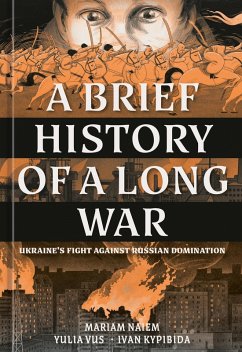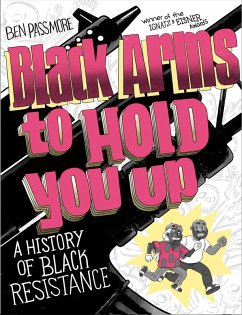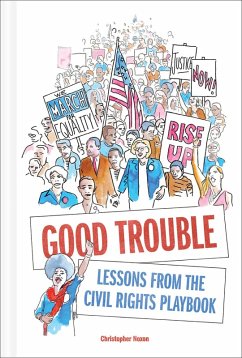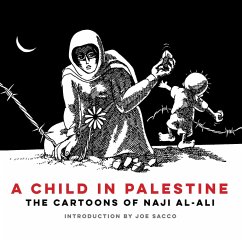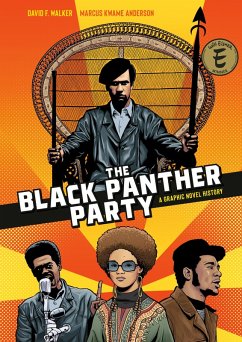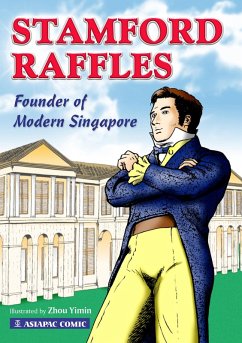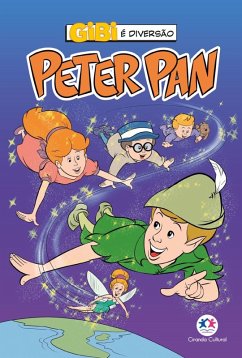
A Crowded Loneliness: The story of loss, survival and resilience of a Peter Pan Child of Cuba : The S=story of loss, survival and resilience of a Peter Pan Child of Cuba : The S=story of loss, survival and resilience of a Peter Pan : The S=story of loss, survival and resilience: The S=story of loss,survival and resi (eBook, ePUB)
The S=story of loss,

PAYBACK Punkte
1 °P sammeln!
Set in Havana during the Cuban Revolution and in the Jim Crow South before and during the Civil Rights Movement, A Crowded Loneliness is based on the true story of Catalina Miranda. Born during the Cuban Revolution in Havana, her family worked closely with Fidel Castro to overthrown the dictator Fulgencio Batista, until Castro announced that he was a communist. After her brother, Lazaro's, arrest and her father's death, her family decided that she would take part in Operation Peter Pan as part of a mass exodus of over 14,000 unaccompanied Cuban children to the United States between 1960 and 19...
Set in Havana during the Cuban Revolution and in the Jim Crow South before and during the Civil Rights Movement, A Crowded Loneliness is based on the true story of Catalina Miranda. Born during the Cuban Revolution in Havana, her family worked closely with Fidel Castro to overthrown the dictator Fulgencio Batista, until Castro announced that he was a communist. After her brother, Lazaro's, arrest and her father's death, her family decided that she would take part in Operation Peter Pan as part of a mass exodus of over 14,000 unaccompanied Cuban children to the United States between 1960 and 1962. At the age of nine, she and her 11-year-old brother, Mario, boarded a plane to Miami with little more than the clothes on their backs. A week later, the black-skinned Catalina and Mario found themselves separated and shipped off to orphanages in New Orleans-in the Jim Crow Deep South. In Cuba, people of all skin colors mixed without much ado, but in the South, Catalina soon learned that the rules were much different for her simply because of her skin color.
Catalina witnessed violence and endured the hateful prejudices of white society outside the protective walls of the orphanage only to face the cruelty of Sister Paulette, a bully named Bertha, and Mother Superior Fidelia inside the orphanage. Nevertheless, she forged friendships and held on to her dream of being reunited with her family. Letters from home came frequently at first, but soon stopped coming altogether. At Christmas, she and Mario were visited by their brother Pete who had fled Cuba through Mexico and had joined the U.S. Army to fight Castro. Pete had an apartment in New York City and promised to one day bring the family together.
Under the protective wing of a few kind sisters and the parish priest, Father Michael Coffey, Catalina was one of a handful of black girls to first integrate the white schools, the segregated Woolworth's dining counter, and the famous whites-only Saenger Theatre.
On the night of September 9, 1965, as Hurricane Betsy smashed ashore, the girls, the sisters, and Father Coffey huddled together in the orphanage hallway. The following morning, they saw crowds of muddied, destitute people, both black and white, clustered outside their back door. It was then that Catalina understood the greatest of life's lessons-in the end, there is no "us" or "them," but only "we."
The heart of the story is Catalina's desire to be an important part of a loving family-to belong. She was surrounded by siblings in her dysfunctional family in Cuba only to be sent to an orphanage in New Orleans where she once again found herself surrounded by people, but felt alone.
Just before her thirteenth birthday, Catalina and Mario were sent to live in two nearby foster homes. Ordinarily, the orphanages sent their children to live in temporary foster homes in order for them to adjust to their new lives outside the orphanage and with their families. That meant that Catalina and Mario would soon be reunited with their family. After nearly four years, Catalina's dream would come true. After six weeks at the foster home, she and Mario were given airplane tickets to fly to New York City. Pete had kept his promise. Somehow, Lazaro was miraculously released from prison, and against all odds, Pete was able to get the entire family out of Cuba and resettled in New York City.
Catalina witnessed violence and endured the hateful prejudices of white society outside the protective walls of the orphanage only to face the cruelty of Sister Paulette, a bully named Bertha, and Mother Superior Fidelia inside the orphanage. Nevertheless, she forged friendships and held on to her dream of being reunited with her family. Letters from home came frequently at first, but soon stopped coming altogether. At Christmas, she and Mario were visited by their brother Pete who had fled Cuba through Mexico and had joined the U.S. Army to fight Castro. Pete had an apartment in New York City and promised to one day bring the family together.
Under the protective wing of a few kind sisters and the parish priest, Father Michael Coffey, Catalina was one of a handful of black girls to first integrate the white schools, the segregated Woolworth's dining counter, and the famous whites-only Saenger Theatre.
On the night of September 9, 1965, as Hurricane Betsy smashed ashore, the girls, the sisters, and Father Coffey huddled together in the orphanage hallway. The following morning, they saw crowds of muddied, destitute people, both black and white, clustered outside their back door. It was then that Catalina understood the greatest of life's lessons-in the end, there is no "us" or "them," but only "we."
The heart of the story is Catalina's desire to be an important part of a loving family-to belong. She was surrounded by siblings in her dysfunctional family in Cuba only to be sent to an orphanage in New Orleans where she once again found herself surrounded by people, but felt alone.
Just before her thirteenth birthday, Catalina and Mario were sent to live in two nearby foster homes. Ordinarily, the orphanages sent their children to live in temporary foster homes in order for them to adjust to their new lives outside the orphanage and with their families. That meant that Catalina and Mario would soon be reunited with their family. After nearly four years, Catalina's dream would come true. After six weeks at the foster home, she and Mario were given airplane tickets to fly to New York City. Pete had kept his promise. Somehow, Lazaro was miraculously released from prison, and against all odds, Pete was able to get the entire family out of Cuba and resettled in New York City.
Dieser Download kann aus rechtlichen Gründen nur mit Rechnungsadresse in A, D ausgeliefert werden.




